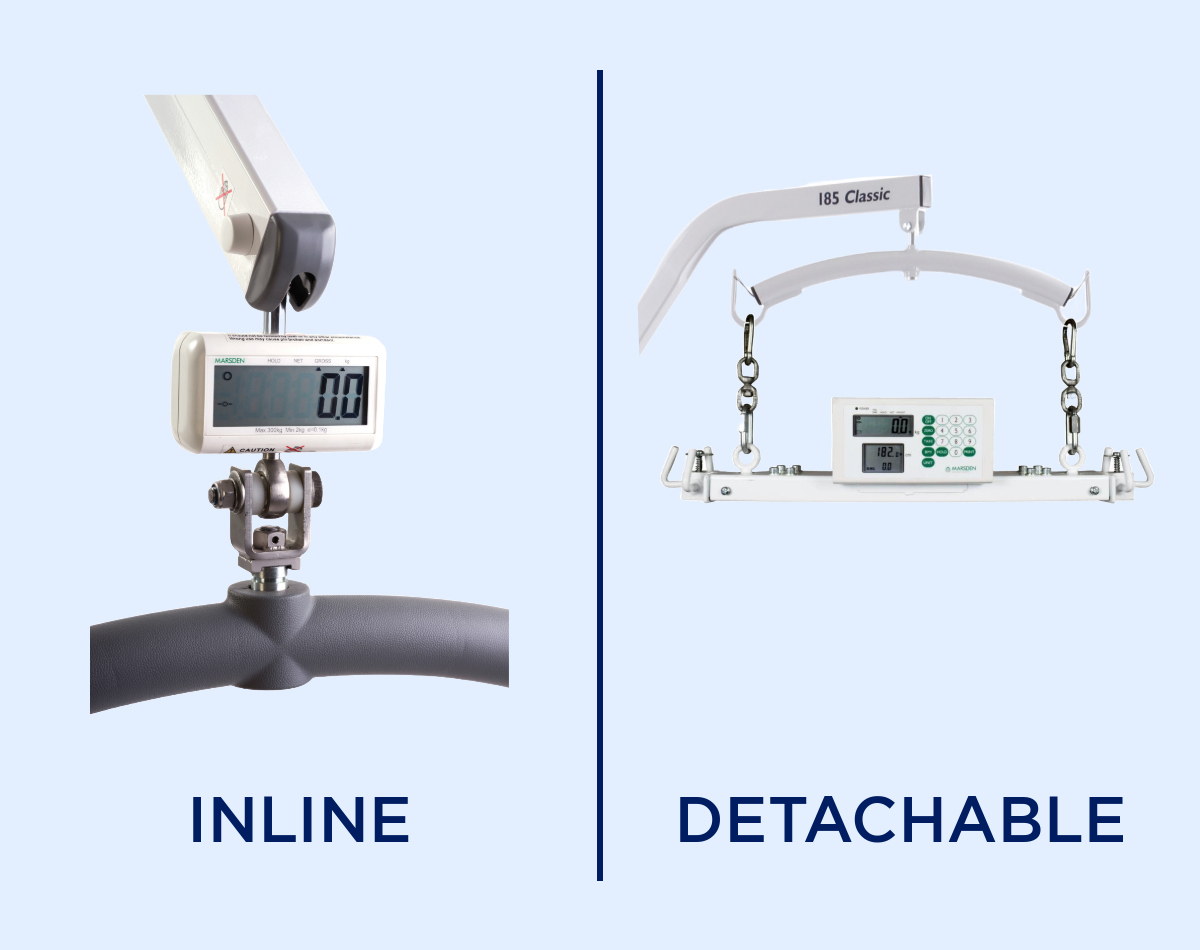Choosing the Best Style of Hoist Scales for Weighing Patients in Care Homes: Inline or Detachable?

In healthcare establishments, especially within care homes, accurate patient weight measurements are crucial. These measurements inform medication dosages, nutritional assessments, and overall health monitoring. Hoist scales, designed specifically for immobile or bedridden patients, are essential tools for care homes. However, the decision between inline (fixed) and detachable (mobile) hoist scales can be a challenging one. This blog will delve into the advantages and disadvantages of both types, guiding you towards making an informed choice.
Understanding Hoist Scales
Hoist scales are integrated with patient lifting equipment, allowing caregivers to weigh patients who cannot stand on traditional scales and whom it isn’t practical to use seated chair scales. These scales enhance patient safety and comfort, reducing the need for additional transfers that can be physically taxing for both the patient and caregiver.
Inline Hoist Scales
Advantages:
- Stability and Accuracy: Fixed hoist scales are permanently installed between the spreader bar and the boom on one specific mobile hoist, often with fixings that require a tool to release them. This stability generally ensures a higher degree of accuracy and consistency in weight measurements.
- Durability: With fewer moving parts and less frequent detachment and reattachment, fixed hoist scales tend to have a longer lifespan and require less maintenance.
- Ease of Use: Since they are always in place and ready to use, fixed hoist scales can streamline the weighing process, reducing the time needed to set up and calibrate the equipment.
Disadvantages:
- Limited Flexibility: Being fixed on one piece of equipment can be inconvenient, especially in larger care homes where patients are spread across different floors. This can lead to logistical challenges, requiring patients to be transported to the scale's floor or the hoist being transfered to the patients floor.
- Higher Initial Cost: Fixed hoist scales can be more expensive due to them usually being made by the original hoist manufacturer to ensure compatibility, limiting the choice of items available. There may also be an installation cost as they should be installed by a competent person who is familiar with the fitting process.
- Lowers Lifting Range: Permanently attaching the weighscale to certain hoists can reduce the maximum lifting height of the hoist. This is because the spreader bar is positioned lower, which subsequently decreases the overall lifting range and limits the maximum height to which a patient can be lifted.
Detachable Hoist Scales
Advantages:
- Flexibility and Convenience: Mobile hoist scales fix to the underside of the hoist spreader bar with a simple clip-on mechanism and can therefore be easily transported directly to the patient's room, and attached to the nearest hoist, reducing the need for patient movement and thereby minimising discomfort and risk.
- Cost-Effective: Generally, mobile hoist scales are less expensive upfront compared to fixed scales.
- Versatility: These scales can be used quickly transported to multiple locations and can often be used on various different brands of hoists, making them a versatile asset in a care home setting.
Disadvantages:
- Potential for Inaccuracy: Mobile scales may face challenges in maintaining accuracy due to frequent movement, and are more prone to inaccurate readings as it is essential they are level when the weight reading is taken.
- Maintenance: With more moving, mobile hoist scales may require more regular maintenance and calibration to ensure they function correctly.
- Setup Time: Each use may require a brief setup and calibration period, which can be time-consuming in a busy care environment.
Making the Right Choice
The choice between fixed and mobile hoist scales ultimately depends on the specific needs and circumstances of your care home. Here are some factors to consider:
- Care Home Size and Layout: Larger care homes with multiple floors or wings may benefit more from mobile hoist scales due to their flexibility. Conversely, smaller care homes might find fixed scales more practical.
- Patient Needs: Consider the mobility and health status of patients. If many patients require frequent weighing and cannot be easily moved, mobile scales might be more beneficial.
- Budget Constraints: While fixed hoist scales have a higher initial cost, they may offer long-term savings through durability and lower maintenance needs. Evaluate your budget for both initial investment and ongoing maintenance.
- Frequency of Use: High-frequency usage might justify the investment in fixed hoist scales, ensuring quick and consistent access to weighing facilities.
Conclusion
Both inline and detachable hoist scales have their place in care homes, each offering unique benefits and challenges. By carefully assessing the specific requirements of the care environment, patient needs, and budget constraints, you can make an informed decision that enhances patient care and operational efficiency. Accurate and reliable weight measurements are paramount in providing high-quality care, and choosing the right hoist scale is a critical step in this process.




